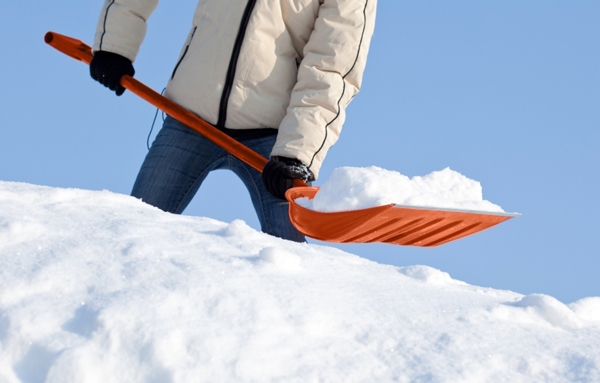Lift Light To Shovel Right

Winter weather can pack a punch and, with the season’s heavy snowfalls, injuries often result. Improper snow shovelling is often to blame.
But shoveling out after a storm doesn’t have to leave you stiff and sore. With a little know-how, you can clear your driveway without the all-too-common back, neck and shoulder pain cramping your style. Here’s how:
Before You Start
- Drink plenty of water. Dehydration is just as big an issue in the winter months as it is in the summer.
- Dress in several layers so you can remove a layer as you get warm.
- Wear proper footwear. Shoes and boots with solid treads on the soles can help to minimize the risk of slips and falls.
- Pick the right shovel. Use a lightweight, non-stick, push-style shovel. A smaller blade will require you to lift less snow, putting less strain on your body. An ergonomically correct model (curved handle) will help prevent injury and fatigue. Also, if you spray the blade with a silicone-based lubricant, the snow will slide off more easily.
- Before beginning any snow removal, warm up for five to 10 minutes to get your joints moving and increase blood circulation. A brisk walk will do it.
PUSH, DON’T THROW.
Push the snow to one side and avoid throwing it. If you must throw it, avoid twisting and turning — position yourself to throw straight at the snow pile.
BEND YOUR KNEES.
Use your knees, leg and arm muscles to do the pushing and lifting while keeping your back straight.
WATCH FOR ICE.
Be careful on icy walkways and slippery surfaces. Intermittent thaws and subsequent freezing can lead to ice building up underfoot, resulting in nasty slips and falls. Throw down some salt or sand to ensure you have a good footing.
Once you’ve mastered safe snow shoveling techniques, you’ll be free to have fun and stay fit all winter.
Lift Light To Shovel Right – OCA
